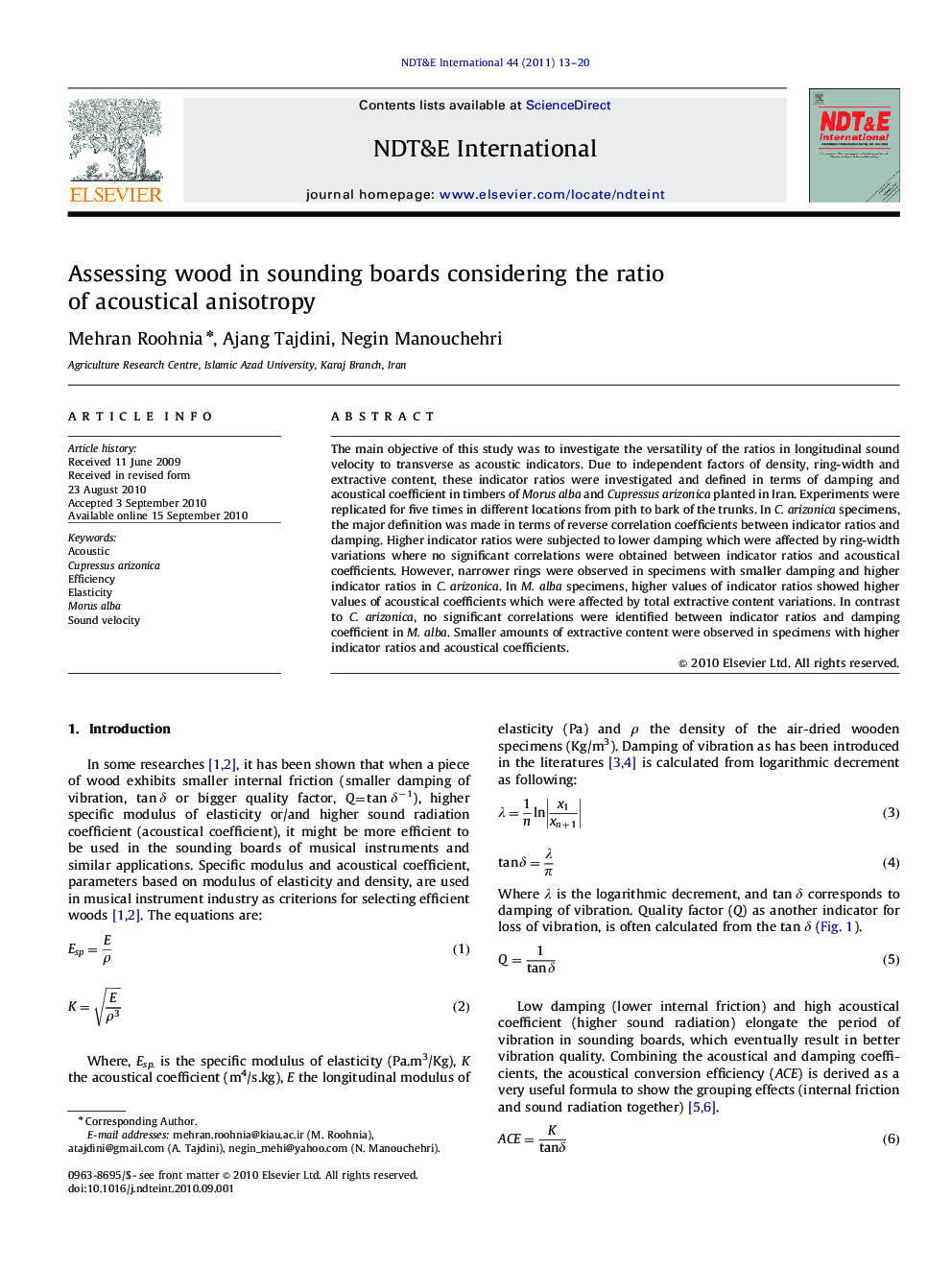| کد مقاله | کد نشریه | سال انتشار | مقاله انگلیسی | نسخه تمام متن |
|---|---|---|---|---|
| 295521 | 511554 | 2011 | 8 صفحه PDF | دانلود رایگان |

The main objective of this study was to investigate the versatility of the ratios in longitudinal sound velocity to transverse as acoustic indicators. Due to independent factors of density, ring-width and extractive content, these indicator ratios were investigated and defined in terms of damping and acoustical coefficient in timbers of Morus alba and Cupressus arizonica planted in Iran. Experiments were replicated for five times in different locations from pith to bark of the trunks. In C. arizonica specimens, the major definition was made in terms of reverse correlation coefficients between indicator ratios and damping. Higher indicator ratios were subjected to lower damping which were affected by ring-width variations where no significant correlations were obtained between indicator ratios and acoustical coefficients. However, narrower rings were observed in specimens with smaller damping and higher indicator ratios in C. arizonica. In M. alba specimens, higher values of indicator ratios showed higher values of acoustical coefficients which were affected by total extractive content variations. In contrast to C. arizonica, no significant correlations were identified between indicator ratios and damping coefficient in M. alba. Smaller amounts of extractive content were observed in specimens with higher indicator ratios and acoustical coefficients.
Journal: NDT & E International - Volume 44, Issue 1, January 2011, Pages 13–20